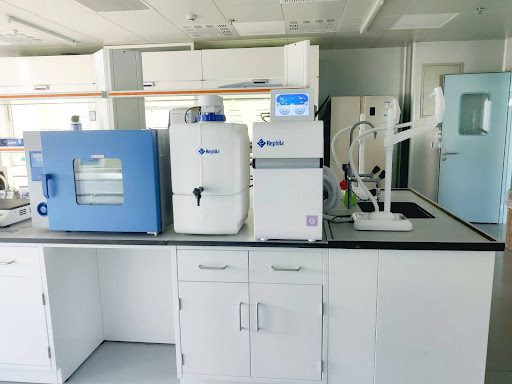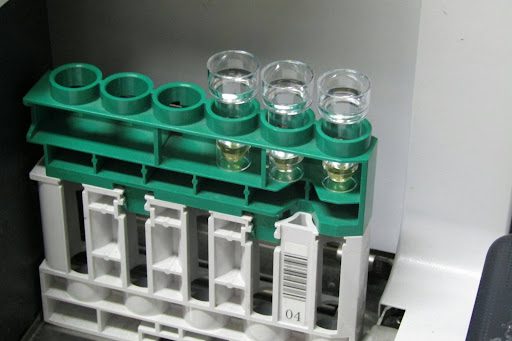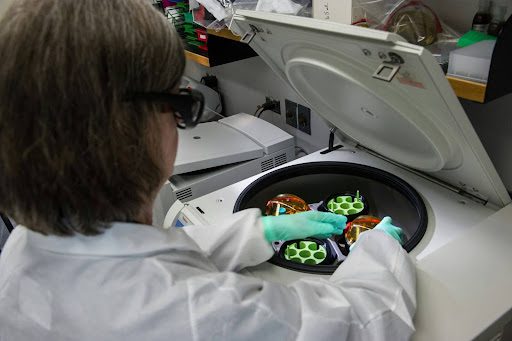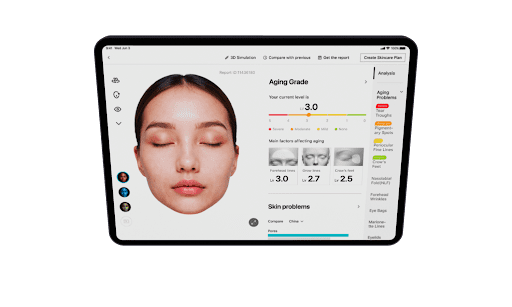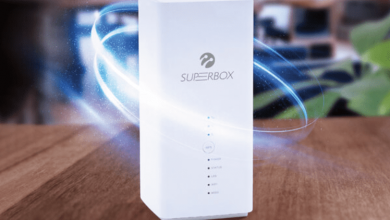The Laboratory Revolution: How Precision Equipment Is Transforming Industries From Research to Beauty
Walk into any modern laboratory today, and you’ll witness something remarkable. The equipment humming quietly in the background, the precise instruments measuring substances down to parts per billion, the automated systems running complex analyses. This isn’t science fiction. It’s the reality of how far laboratory technology has advanced, and it’s revolutionizing everything from pharmaceutical development to the skincare products you use every morning.
The past few decades have brought unprecedented changes to laboratory work. What once required days of manual labor and offered inconsistent results can now be accomplished in hours with remarkable accuracy. But here’s what makes this evolution truly fascinating: the ripple effects extend far beyond traditional research laboratories. The same principles of precision, reliability, and innovation that drive advances in analytical chemistry are now transforming consumer-facing industries in ways most people never consider.
Understanding this technological transformation matters because it affects the quality and safety of countless products we interact with daily. From ensuring the purity of medications to validating the efficacy of skincare formulations, laboratory equipment serves as the invisible guardian of quality in our modern world.
The Foundation of Modern Scientific Analysis
Laboratory technology has always been about answering one fundamental question: what exactly are we looking at? Whether you’re analyzing a pharmaceutical compound, testing water quality, examining food safety, or validating cosmetic ingredients, you need accurate, reliable methods to separate, identify, and quantify the substances in your samples.
This challenge becomes exponentially more complex when you’re working with real-world samples rather than pure substances. Environmental samples contain hundreds of different compounds. Biological samples are incredibly complex matrices with proteins, salts, and countless other components. Food and beverage samples present their own unique challenges. And in every case, you’re often searching for trace amounts of specific substances hidden within this complexity.
The solution lies in sample preparation, which is arguably the most critical step in any analytical process. Think of it like trying to find a specific person in a crowded stadium. You could search through everyone randomly, but it would be far more efficient to first filter the crowd by certain characteristics, isolate the section where your person is likely to be, and then conduct your search in that targeted area.
This is exactly what modern sample preparation techniques accomplish at the molecular level. They take complex mixtures and systematically remove interfering substances, concentrate target compounds, and present samples in a form that analytical instruments can accurately measure. The difference between good and bad sample preparation often determines whether your results are meaningful or meaningless.
The stakes couldn’t be higher. In pharmaceutical development, sample preparation accuracy can mean the difference between identifying a promising drug candidate and missing it entirely. In environmental testing, it determines whether contamination is detected before it becomes a crisis. In quality control for consumer products, it ensures that what’s on the label matches what’s in the bottle.
The Gold Standard in Sample Preparation
Among the various sample preparation techniques available to laboratories today, solid phase extraction has emerged as one of the most versatile and reliable methods. The principle is elegant in its simplicity: you pass your liquid sample through a cartridge or column containing a specialized sorbent material that selectively retains compounds of interest while allowing unwanted substances to pass through. After washing away remaining impurities, you elute your target compounds in a clean, concentrated form ready for analysis.
What makes this technique so powerful is its adaptability. Different sorbent chemistries can be selected based on the properties of your target compounds and the nature of your sample matrix. Reversed-phase sorbents work beautifully for extracting non-polar compounds from aqueous samples. Ion exchange materials excel at capturing charged molecules. Size exclusion options can separate compounds based on molecular weight. The right choice of sorbent essentially gives you a molecular-level filter custom-designed for your specific application.
For laboratories serious about achieving consistent, high-quality results, the choice of extraction materials matters tremendously. Quality varies widely across suppliers, and unreliable materials lead to irreproducible results, wasted time, and potentially flawed conclusions. This is where established manufacturers with proven track records become invaluable partners. Solutions like Solid Phase Extraction (SPE) Columns and Cartridges by Shimadzu represent the kind of reliable, high-performance options that serious laboratories depend on when accuracy and reproducibility are non-negotiable.
The applications span virtually every industry you can imagine. Pharmaceutical companies use these techniques throughout drug development, from initial compound screening through quality control of finished products. Environmental laboratories rely on them to detect pesticides in water, monitor pollutants in soil samples, and analyze air quality. Food and beverage companies employ them to test for contaminants, verify ingredient authenticity, and ensure product consistency. Clinical laboratories use them to prepare biological samples for diagnostic testing and therapeutic drug monitoring.
The Expanding Reach of Laboratory Innovation
What’s particularly exciting about advances in laboratory technology is how they’re crossing traditional boundaries. The same rigorous analytical approaches that originated in research and clinical settings are now being applied to industries that historically relied more on tradition and anecdote than hard data.
The beauty and skincare industry provides a perfect example of this transformation. For decades, cosmetic development was as much art as science. Formulations were created based on experience and intuition, with limited ability to precisely measure their effects on skin. Marketing claims often outpaced scientific validation, and consumers had little reliable information to guide their purchasing decisions.
That’s changing rapidly. Modern consumers are more educated and skeptical than ever before. They want proof, not promises. They read ingredient lists, research active compounds, and demand transparency about what products actually do. This shift in consumer expectations has forced the beauty industry to embrace the same scientific rigor that’s long been standard in pharmaceuticals and medicine.
But adopting a scientific approach requires the right tools. You can’t validate skincare claims with guesswork and testimonials. You need objective measurements of skin properties before and after product use. You need controlled studies that account for variables. You need equipment capable of detecting and quantifying subtle changes in skin characteristics. In short, you need laboratory-grade precision applied to beauty and wellness.
Technology Meets Beauty: The New Era of Skincare Science
The convergence of laboratory technology and beauty has created an entirely new category: science-backed skincare supported by objective measurement and validation. This isn’t about adding a scientific veneer to traditional cosmetics. It’s about fundamentally reimagining how we understand, develop, and validate products designed to improve skin health and appearance.
Modern skin analysis technology can measure properties that were invisible to earlier generations. Devices can quantify hydration levels in different skin layers, measure elasticity and firmness, analyze pigmentation patterns, assess micro-texture and smoothness, and even visualize beneath the skin surface to examine deeper structures. This objective data transforms skincare from an art based on subjective perception into a science grounded in measurable outcomes.
For skincare professionals, cosmetic developers, and medical aesthetic practitioners, access to reliable measurement equipment has become essential. The ability to objectively demonstrate product efficacy, track treatment progress, and customize approaches based on individual skin characteristics separates serious practitioners from those still relying on outdated methods. This is where specialized suppliers focusing specifically on skincare technology fill a crucial niche. Companies like Evelab Insight – Skin Tech Equipment Supplier understand the unique needs of beauty professionals and provide the specialized equipment necessary to bring scientific precision to skincare practice.
The impact extends beyond just validating products. Objective skin measurements enable truly personalized skincare approaches. Instead of recommending products based on general skin type classifications, practitioners can now create customized regimens based on precise measurements of individual skin characteristics. They can track how skin responds to different treatments over time, adjusting approaches based on objective progress rather than subjective impressions.
This technology also empowers consumers to make more informed decisions. When skincare products are developed and tested using rigorous scientific methods, the claims on the label actually mean something. Consumers can trust that “clinically proven” isn’t just marketing speak but reflects genuine testing and validation using objective measurement tools.
The parallels to other industries are striking. Just as pharmaceutical companies must validate drug efficacy through rigorous testing, skincare brands are increasingly expected to provide scientific evidence supporting their claims. Just as food manufacturers must ensure product safety and consistency through analytical testing, cosmetic companies are adopting similar quality control measures. The same commitment to precision and reliability that defines modern laboratory work is now becoming the standard in beauty and wellness.
The Broader Impact of Precision Technology
What ties these seemingly disparate applications together is a fundamental commitment to accuracy, reliability, and continuous improvement. Whether you’re isolating trace compounds for pharmaceutical analysis or measuring subtle changes in skin hydration, you’re applying the same underlying principle: precise measurement enables better understanding, which drives better outcomes.
This principle extends far beyond the specific examples we’ve discussed. In forensic science, advanced sample preparation and analysis techniques solve crimes and exonerate the innocent. In agriculture, they help optimize crop treatments and ensure food safety. In manufacturing, they enable quality control that keeps products consistent and safe. In environmental protection, they detect contamination before it becomes catastrophic.
The common thread is the recognition that quality matters. Cutting corners on equipment, using unreliable methods, or accepting “good enough” results might save money in the short term, but it inevitably leads to problems down the road. Contaminated products, flawed research conclusions, incorrect diagnoses, ineffective treatments – the costs of imprecision far exceed the investments required to get things right from the start.
For professionals across these industries, choosing the right equipment partners becomes a strategic decision. You need suppliers who understand not just the technical specifications of their products but also the real-world challenges you face. You need reliable performance, consistent quality, and support when questions arise. You need partners invested in your success, not just vendors looking to make a sale.
Looking Toward the Future
The trajectory is clear: precision will only become more important as technology advances and standards rise. Analytical techniques will continue improving, offering better sensitivity, faster results, and more comprehensive information. Automation will reduce manual labor and minimize human error. Data systems will integrate information from multiple sources to provide deeper insights.
In the beauty industry, we’ll likely see even more sophisticated skin analysis tools that can predict how skin will respond to different treatments, enabling truly proactive skincare approaches. In analytical chemistry, miniaturization and speed improvements will make advanced testing more accessible to smaller laboratories and point-of-care settings. Across all industries, artificial intelligence and machine learning will help identify patterns in complex data that humans might miss.
But amid all this technological advancement, the fundamentals remain constant. Quality equipment operated by skilled professionals, rigorous methods applied consistently, and a commitment to accuracy over convenience. These principles have driven scientific progress for generations, and they’ll continue guiding innovation in the years ahead.
The laboratory revolution isn’t just about fancier equipment or faster analysis. It’s about applying proven scientific principles to new challenges, expanding the reach of precision measurement into industries that previously lacked objective tools, and ultimately delivering better outcomes for everyone. From the pharmaceutical researcher hunting for the next breakthrough drug to the skincare professional helping clients achieve healthier skin, precision technology is the common enabler of progress.
The future belongs to those who embrace these tools and the rigorous approach they represent. Whether your laboratory focuses on environmental monitoring, pharmaceutical development, quality control, or aesthetic innovation, the message is the same: invest in quality, demand precision, and never settle for good enough when excellence is achievable.

